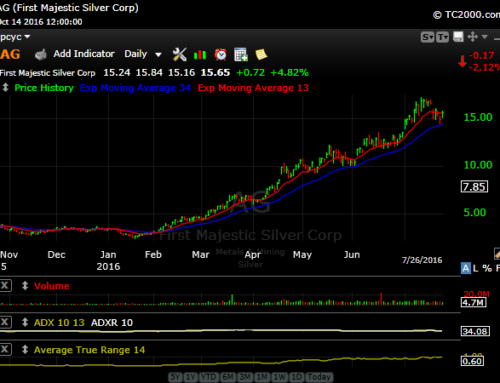 The vast majority of people who are throwing their money at the markets these days have virtually zero understanding about the concept of risk management.
The vast majority of people who are throwing their money at the markets these days have virtually zero understanding about the concept of risk management.
Most of these people might have a few thousand dollars to blow and figure that, instead of going to Vegas, they’ll give Bitcoin a shot, or a stock like Gamestop.
Some have actually managed to make a good bit of money, but I am here to tell you that for most of these people, it has been pure luck.
With this in mind, I felt the need to start covering some of the basics of trading with this Trading 101 series I am putting together.
My last post dealt with Risk of Ruin.
Today I am moving on to Risk Management.
Trading with an edge
First, I thought it would be a good idea to discuss the concept of Trading with an Edge.
As I mentioned above, most people are effectively just gambling with their money.
However, people who actually trade for a living understand that to achieve long term success, you must have some sort of trading edge.
An edge refers to having a systematic advantage over an opponent. Most games offered in a casino provide the casino with long term edge over its clientele.
In trading, an edge is an exploitable statistical advantage based upon market behavior that is likely to occur again in the future.
An edge is identified by locating entry points where there is a greater than normal probability that the market will move in a particular direction within the desired time frame.
These entry points are then paired with exit points that are designed to profit from the move in which the entry point is designed.
The CANSLIM strategy for trading stocks developed by Investors Business Daily founder, William O’Neil is an example of a strategy with a long term edge.
Expectation
 Expectation is a term that is also used in gambling and it attempts to quantify the results that can be expected if a trader or gambler continues to employ a certain strategy over a long period of time.
Expectation is a term that is also used in gambling and it attempts to quantify the results that can be expected if a trader or gambler continues to employ a certain strategy over a long period of time.
Casino owners are not concerned with individual losses because they know that those losses to the casino will only encourage the client to keep playing, which plays into the edge the casino holds over the client.
Losses are simply the cost of doing business, and this is how a successful trader views individual losing trades. These traders will look at the long term results of an approach and ignore the expected losing trades associated with that approach.
Through quantitative research, a trader can gain an understanding of the expectation of each individual trade.
For the average trader, if you keep track of your trades, over time you will gain an understanding of what to expect in the long run from your strategy. This will allow you to nail down how much you really want to risk per trade.
And that takes me to the last concept… Risk Management.
Risk Management
Risk management simply refers to managing the size of market risk to ensure maintaining the ability to continue trading (or gambling) through the inevitable losing streaks.
Risk management is essentially the science of controlling your risk of ruin at appropriate levels while maximizing profit potential.
Traders typically employ risk management strategies that are based upon portfolio size and the volatility within the markets they are trading.
Once a trader determines what they can expect on each individual trade over the long run, they can then determine how much of their equity they will risk on a per trade basis, based upon the rates of return they are trying to achieve.
Tying it all together
 So, now that we have discussed these concepts, here is the implication…
So, now that we have discussed these concepts, here is the implication…
When you enter a position, you must have a stop loss. To calculate the number of shares you want to buy, you must determine how much of your portfolio you want to risk on the trade.
This is based in part on the average expectation you will have on each trade, which considers your percentage winners, the average gain on a winning trade and average loss on a losing trade.
Most people don’t have the capability to make this determination, as it requires some programming skills, or knowledge of how to use backtesting software.
In his book, “How to Make Money in Stocks” William O’Neil suggested using a stop loss of 7% to 8% below the purchase price. So, if you by a $100 stock, your stop loss would be at $93 or $92.
Keep in mind, it is very possible that the stock will gap well below your stop loss. For instance, after a bad earnings report, I’ve seen stocks fall as much as 50%. We have no control over that.
This is why you never want to bet all of your equity on a single position.
Market Wizard Mark Minervini, who trades a trend following type approach in the stock market, suggests using this formula….
If you have a $10,000 account, invest $2,500 on any single trade, and use a stop loss of 10% below your purchase price.
Therefore, if you are buying a $10 stock, you would buy 250 shares, and the stop loss is at $9.00. If your stop is hit, you lose $1 per share, or $250. That would equate to 2.5% of your initial account equity.
Ultimately, how much you want to risk per trade should consider the following:
- Type of strategy you are trading
- Your expected number of winning trades and losing trades
- How much you think you will gain on a winning trade
- How much you will lose on a losing trade… and
- How much risk you personally are able to deal with and still sleep at night
Alright, that’s all I got for now. If you liked this article, please share, and feel free to comment below.
Thanks for reading!





Leave A Comment